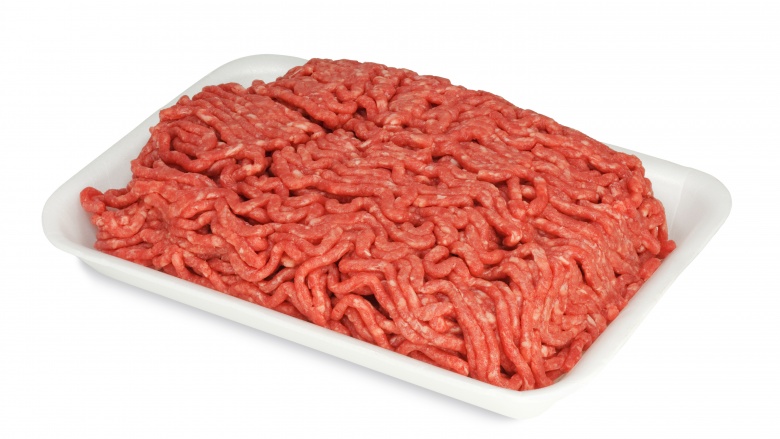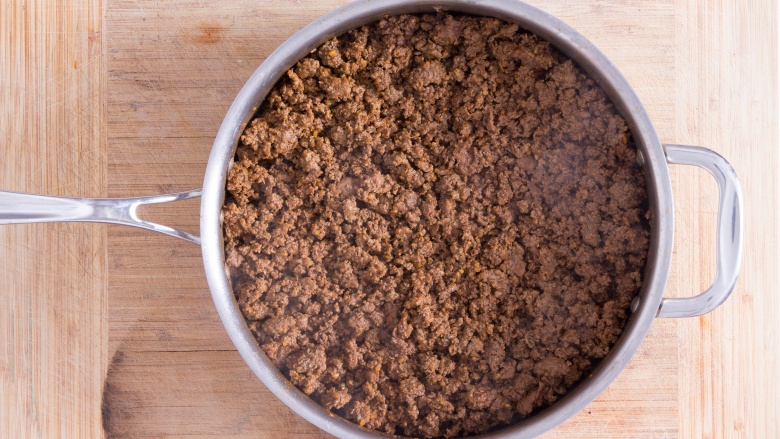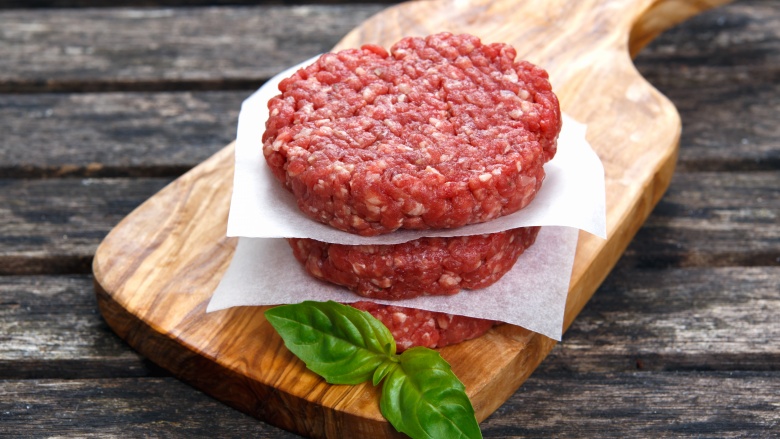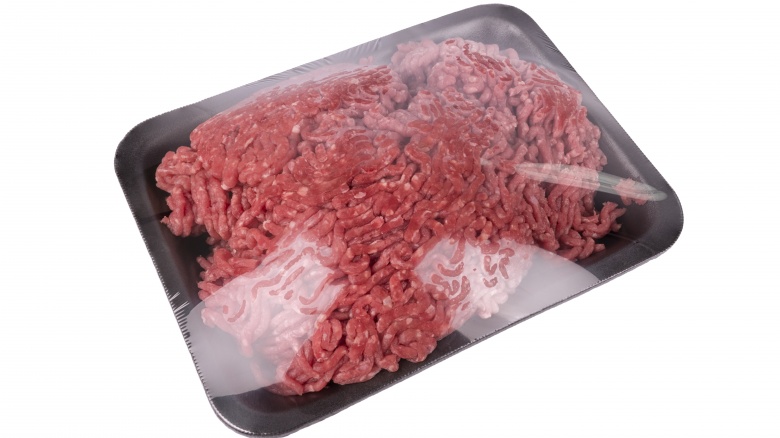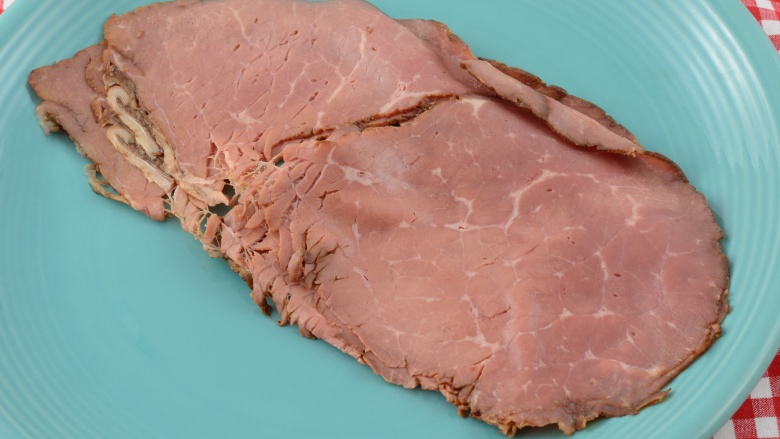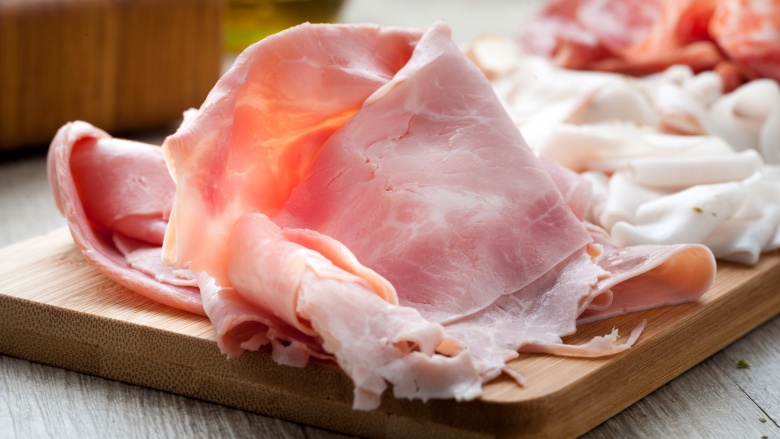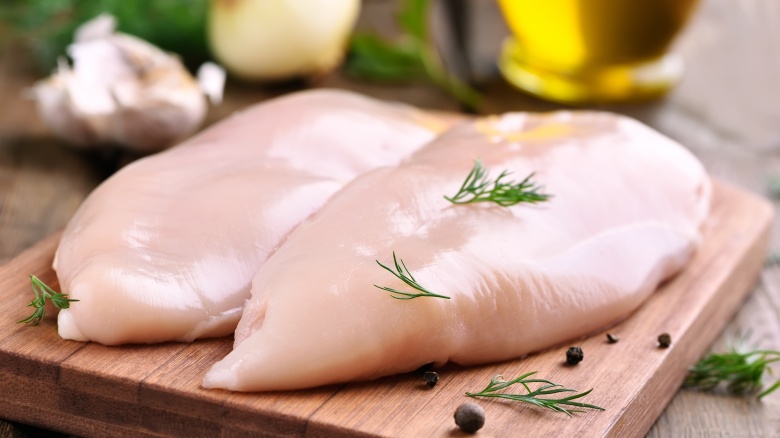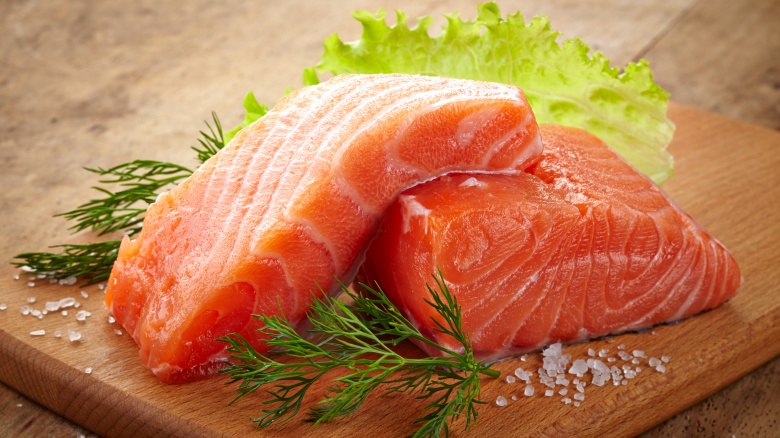Meat Colors Explained
Who doesn't like a nice juicy steak or buttery piece of chicken? Adding meat to a meal can add instant flavor and richness. It could also add instant bacteria if it has gone bad. Most of us have always believed that one of the most telling signs that food has gone bad is its color. Knowing which colors are okay and which will send you straight to the bathroom is vital for all cooks, new and old. Here we'll break down common meat colors and what they mean for you and your family.
What affects the color?
It can be tricky to know when to throw away that meat in your refrigerator. It's actually so confusing that the U.S. Department of Agriculture's Meat and Poultry has their own hotline for all kinds of questions about meat and poultry. According to this team, the color of a piece of meat is affected by a variety of factors. According to them, color is "influenced by the age of the animal, the species, sex, diet, and even the exercise it gets. ... Exercised muscles are always darker in color, which means the same animal can have variations of color in its muscles."
Why does the color change?
As meat sits in the refrigerator or freezer, its color can become slightly lighter or darker. This alone does not mean it has gone bad. If you notice color changes along with other changes, like a new smell or consistency, it's best to toss it. The protein myoglobin is actually responsible for giving raw meat its red color, and it is present in the animal's tissues and turns red when exposed to oxygen during processing.
Red meat
When you're planning to host a barbecue at your house, you typically search the meat counter for the perfectly colored ground beef. It can actually be quite tricky for the store to keep the meat looking good. Fresh ground beef actually has a purplish color thanks to the myoglobin. If it's been vacuum sealed at the store, it could still look slightly purple. This may not look as appetizing, but it's a fresh, healthy piece of meat. Once the meat comes in contact with oxygen (like when the seal is broken), it will quickly turn bright red thanks to the myoglobin. After a while, the myoglobin will cause the ground beef to take on a reddish-brown color. While this won't look very nice if your guests are watching you cook, the brown color does not mean the meat has gone bad. Look for other changes like smell or touch before tossing it.
Gray or brownish color
So you've stocked up on quality beef for your barbecue. It's the perfect bright red color, but once you get home and open the package, you notice it looks a little gray on the inside. Annoyed, you throw it away and head back to the store.
But stop! That gray color on its own doesn't mean the meat has spoiled. Again, our old friend myoglobin made that happen. The meat on the surface of the package is exposed to more oxygen, giving it that red color. The meat at the center of the package hasn't been exposed to that much oxygen, so it still has some purple hues, which can appear gray next to the red pieces. As long as that's the only change, throw it on the grill and enjoy.
Rainbow meat
When searching for the best piece of meat at the deli, I always steer clear of any discoloration. Sometimes, cuts of beef can have areas of a silver, almost iridescent color. It can also be a shiny green color. I've always assumed that those were spoiled, but it turns out that shiny tint has nothing to do with the quality of the meat.
The meat we buy is made up of all different compounds like iron and fat. When light hits them, it can split the colors and cause a rainbow effect. While the meat is still completely safe, it doesn't look very good. You can try to keep your raw meat away from bright lights to minimize this effect.
This same discoloration process can happen to deli meats as well. That roast beef sitting in your fridge may turn a little gray or green. Because deli meats are cured, their chemical structures are changed. After this happens, they're more likely to change color after coming into contact with oxygen or light. Just like with any meat, this color change alone does not indicate spoilage. Check for other changes in smell or a slimy feel, and only throw it away if you notice another change.
EXCLUDE
Well done
You know that annoying friend at your party who insists that you didn't cook her burger enough? She asked for well done and still sees some pink. As kindly as you can, try to explain that meat's color does not tell us if it is fully cooked. When the myoglobin is cooked, it can still produce a red or pink color, even if the burger is fully cooked. The only way to know for sure is to measure the meat's temperature. When the internal temperature of your cheeseburger is 160 degrees, it's cooked through. If your friend still protests, toss some potato salad on her plate and go about your business.
Pink poultry
Cooked chicken and turkey can vary in color. Fully cooked poultry can look white, tan, or pink. I know I've felt a little nervous about eating a chicken burger that is still pink, but it could still be safe. As long as the internal temperature is 165 degrees, you're in the clear.
Cooked poultry can also get a pink hue from the cooking process itself. Meat from younger birds is usually pinker, because they have thinner skins. Go by the temperature, and you'll be fine.
Red salmon
Making some salmon burgers at the barbecue, too? Don't get confused by the rainbow of colors they can come in. Cuts of salmon can vary in color and usually vary based on where they're grown. Wild salmon has a deep red color, where farmed salmon is usually a lighter, pinkish-orange color. The different colors can be attributed to their different diets. Wild salmon live in the ocean and mainly eat crustaceans like shrimp. These crustaceans are filled with carotenoids, the same nutrients that give orange vegetables like carrots and sweet potatoes their color. Farmed salmon on the other hand eat a mix known as "salmon chow." According to the Atlantic Canada Fish Farmers Association, this is made up of "dry pellets made from animal, plant and fish proteins of natural origin to include essential vitamins and minerals." As long as your salmon has a deep red or pinky orange color, you're good to go!
When it comes to meat and poultry, the color alone can't tell you its quality. Use all your senses and always keep a meat thermometer handy!

